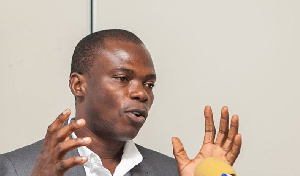Opinions of Monday, 4 October 2021
Columnist: Sulemana Braimah
Digital TV switchover in Ghana: A tale of unfulfilled ministerial deadlines
In 2006, member states of the International Telecommunications Union (ITU) signed an agreement in Geneva to transition television broadcasting from analogue to digital. The deadline for the transition was agreed to be June 17, 2015, that is nine years after the agreement. Ghana was one of the signatories to the agreement.
This ITU agreement was a vital step in the television broadcast industry and also in the management of digital assets of nations.
The benefits of migrating from analogue to digital television broadcast are enormous. Apart from better picture and sound quality for consumers, digital technology enables the deployment of more channels, diverse content and better interactivity.
More importantly, digital broadcast utilises relatively limited bandwidth or spectrum. The efficient use of frequency, frees-up a lot of valuable spectrum (digital dividend) that countries can re-sell for millions of dollars or utilise for other digital purposes for national development.
In Kenya for example, after the country’s switchover in 2015, the number of broadcasters increased from just 14 to 65 within a short period of two years. Despite the increase in the number of broadcasters, the spectrum used for broadcasting decreased by half – from 448 in analogue to 224 after the switch to digital. This was in addition to the other advantages of better sound and video output as well as better interactivity that is made possible through digital broadcasting.
The East African trio of Kenya, Tanzania and Rwanda, met the ITU’s 2015 switchover deadline. A 2018 report by Africa Telecommunications Union indicates that several other countries including, Liberia, Uganda, Malawi, Mauritius managed to complete their switchover by 2018.
In Ghana, six years after the ITU deadline, the story of the country’s digital migration remains ministerial big talk. So far, the record has been full unfulfilled promises of deadlines for the switchover.
The ministerial rhetoric of deadline promises started back in 2011 when Hon. Haruna Iddrisu (current Minority leader in parliament) was the Minister for Communications. On Wednesday November 23, 2011, he announced, quite ambitiously, that a roadmap had been completed and that Ghana’s digital TV switchover was going to happen by 2014.
In fact, Hon. Iddrisu went on to promise at an international forum on digital migration, that Ghana could actually go fully digital as early as 2013. With this assurance, many had hoped that Ghana will perhaps be the first African country to fully switchover to digital broadcasting. But it ended up being what it was – just big talk.
Then came Dr. Edward Omane Boamah as Minister for Communication from 2013 to 2016. He started with an excuse. On April 8, 2015, Dr. Boamah said Ghana could not meet the digital migration deadline announced by his predecessor, largely due to a delay in securing a Chinese Exim Bank loan facility. He explained that the loan was needed by government to facilitate installation of the needed infrastructure for the digital switchover.
Subsequently, it was his turn to promise a switchover deadline. Unlike his predecessor, as a medical Doctor, he was used to precision. So, he gave a specific date. The switchover was going to be on September 21, 2017, he promised.
Based on Dr. Omane Boamah’s promise, the Ghana Broadcasting Corporation (GBC) announced that: “On September 21, 2017, all analogue transmitters and frequencies will be switched off in the country.” The Daily Graphic carried a story with the headline: “Analogue TV transmission switch-off now Sept 21, 2017.” Other media organisations shared the same information with enthusiasm.
But before the September 21, 2017, deadline, there was a new government and a new Minister. The New Patriotic Party (NPP) won the 2016 elections. Hon. Mrs. Ursula Owusu-Ekuful was appointed the Minister for Communications.
During her vetting by the Appointments Committee of Parliament on February 1, 2017, Hon. Owusu-Ekuful made it clear that the deadline for the digital switchover was likely going to be extended. And indeed, on September 21, 2017, the switchover did not happen.
Three years on, it was time for Hon. Owusu-Ekuful to announce her deadline too. So on Friday, January 17, 2020, Mrs. Owusu-Ekuful announced at a stakeholders’ forum that the switchover was going to be in June 2020. She avoided giving any precise date in June. It was going to be in June. But just like previous ministerial sweet promises, June 2020, came to pass and the combination of analogue and digital broadcasting continued.
In July 2020 (after the unfulfilled deadline passed), the Communications Minister was back with an announcement. This time, it was not about a switchover deadline. It was about why her promised deadline could not be fulfilled. Unsurprisingly, the culprit was COVID-19.
After the June 2020 deadline fiasco, the last time the nation was told something close to another deadline for the switchover was on April 17, 2021. This time, the minister announced to stakeholders during the handing over of an office complex for an entity called the Central Digital Transmission Company that “Ghana’s strive to fully migrate from analogue to digital transmission is on course.” There was no more a deadline. It’s just on course!
The question remains: So, when will Ghana fully migrate?
Entertainment










